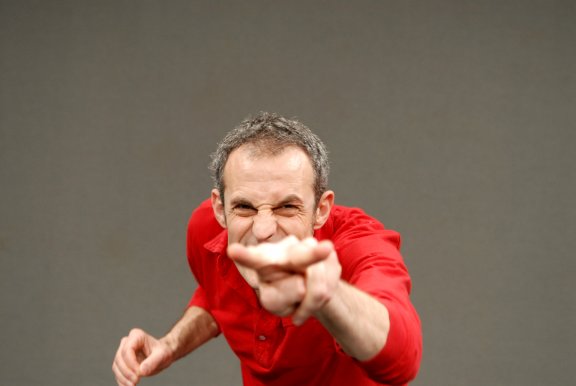27.03.19 — 20:30
CN D à Pantin
Le Sacre du Printemps (The Rite of Spring) (2007)
This “Rite” proceeds from an inversion: instead of a choreography for dancers, in an umpteenth variation of the iconic piece written by Nijinsky, Xavier Le Roy sets about staging the gestures of the conductor as he directs the performance of Stravinsky’s music. Inspired by a documentary about the Berlin Philharmoniker, Rhythm is it!, the choreographer examines the relationship between music and movement while upsetting their order of causality. For, such gestures are the real motors of music as much as they are determined by it, in a way that intention and execution seem to become mingled. What Xavier Le Roy calls the “synchronising machine”, of seeing and hearing, is thus based on the possibility of an aesthetic, temporal community between the conductor, the spectators and the musicians. The bodily experience of listening is accordingly no longer apprehended as a purely auditory phenomenon, but as an incarnated process, out-smarting the expectations of the public and reinventing the conditions of their reception.
Salut für Caudwell (2005)
This extract from the project Mouvements für Lachenmann, Staging of an Evening Concert (2005), conceived in honour of the seventieth birthday of the German composer, Salut für Caudwell is the first piece in a series of shows, written through a musical interpretation of pre-existing works. In this case, it is a 1977 composition, dedicated to the British poet Christopher Caudwell, who fell in combat during the Spanish Civil War, which sets to music a Marxist-inspired pamphlet against bourgeois thought. The schema conceived for four performers, instead of the two guitarists as initially planned, dissociates the music played in the wings from the interpretation being mimed on the stage. The detachment produced between the two guitarists, who are out of sight, and two other musicians, who execute the original score without instruments, deconstructs the usual identification between the visible and the audible. Xavier Le Roy also adopts Lachenmann’s indications (“muffled” sounds, “the most neutral possible diction, almost as though read out aloud”…) so as to translate them into gestures, going so far as to transform the sonic event and the musical playing into purely plastic objects.
